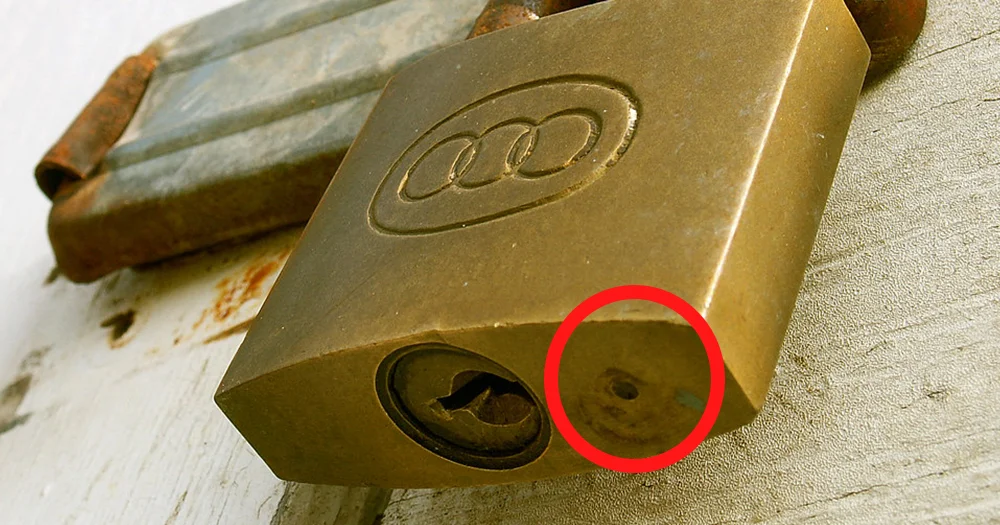Most of us have used a padlock at some point, perhaps for a gym locker, a storage shed, or a gate. If you look closely at the bottom of many of these locks, you might notice a very small, almost invisible hole. It is easy to overlook, but this tiny feature has a very important job. It is not a manufacturing error or a leftover mark; it is a clever design element that helps the lock last longer.
The main reason for this little hole is to let water out. Since padlocks are often used outdoors, they are exposed to rain and humidity. Over time, moisture can find its way inside the lock body. If this water gets trapped, it can cause the internal metal parts to rust and corrode. The small hole, often called a drain hole or weep hole, allows that water to escape, which helps keep the inside of the lock dry.

This simple drainage system prevents the lock from becoming jammed with rust. Without it, you might find yourself struggling to turn the key or even unable to open the lock at all. The next time it rains, you might notice a droplet of water hanging from this hole; that is a sign it is doing its job, letting the moisture drain away to protect the delicate mechanism inside.
The hole has a second useful purpose as well. It can be used for maintenance. If a lock begins to feel stiff, you can squirt a small amount of lubricating oil directly into this hole. The oil will travel inside and coat the moving parts, reducing friction and helping to prevent future rust. This simple trick can bring an old, sticky lock back to life and extend its usefulness for years.
So, the next time you pick up a padlock, take a moment to look for this small but vital feature. It is a brilliant piece of engineering that solves a common problem in a very simple way. This little hole is a perfect example of how a small, thoughtful detail can make a big difference in how well an everyday object works.


